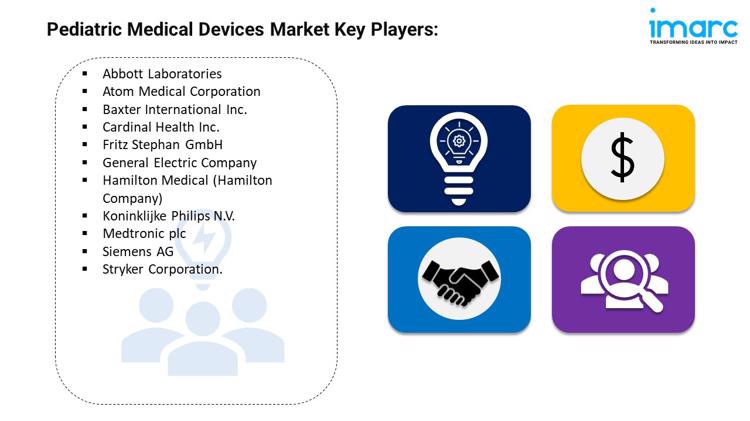
IMARC Group’s report titled “Pediatric Medical Devices Market Report by Product (IVD Devices, Cardiology Devices, Anesthesia and Respiratory Care Devices, Neonatal ICU Devices, Monitoring Devices, Diagnostic Imaging Devices, Telemedicine, and Others), End User (Hospitals, Diagnostic Laboratories, Pediatric Clinics, and Others), and Region 2025-2033”. The global pediatric medical devices market size reached USD 41.5 Billion in 2024. Looking forward, IMARC Group expects the market to reach USD 79.4 Billion by 2033, exhibiting a growth rate (CAGR) of 7.1% during 2025-2033.
Factors Affecting the Growth of the Pediatric Medical Devices Industry:
The market shows growth because of escalating global child health conditions including heart diseases along with asthma along with diabetes and neurological disorders and many other similar conditions. The market requires more specialized equipment as the conditions affect a larger number of patients including children whose medical tools need specific features. The surgical instruments and specialized prostheses used to treat congenital heart diseases must be effectively advanced since these kids possess unique body dimensions. New inhalers and nebulizers for asthmatic patients should incorporate features that accommodate children due to asthma affecting 75% of the patient population. The increase of pediatric diabetes mellitus cases requires new medical systems including insulin pumps and glucose monitoring devices suitable for children.
The Ant-New development functions as a highly delicate tool to determine market growth rates for assessment purposes. The vital sub specialty of medicine continues to evolve through technological advances that include small scale device development along with anticipated material biocompatibility and diagnostic instrument access methods. The manufacturing process of new instruments with smaller dimensions than traditional instruments has established a fresh age in MI alongside shorter recovery periods and better surgical results for pediatric patients. Results from such biocompatible materials remain both better and safe for any child when devices or implants are removed after chipping. The field of modality continues to advance pediatric illness diagnosis and prediction through applications such as CT, MRI scans and ultrasounds.
They also found that government sponsorship and financial support is helpful in expanding the market. Thus, there are a growing number of governments and regulatory authorities, and organizations around the world that understand the need for specialized PMDs and are striving to create more targeted policies and programs. Such measures can be in the form of monetary rewards, a simplified approval process for products, clinical trial funding for children. This support not only promotes new developments in the field but also guarantees the safety, effectiveness, and correct sizing of medical devices used by pediatric patients.
Grab a sample PDF of this report: https://www.imarcgroup.com/pediatric-medical-devices-market/requestsample
Leading Companies Operating in the Global Pediatric Medical Devices Industry:
